Amman Citadel is one of those places in the world that no era of history has left untouched. There is something about places that have been inhabited for a long time that attracts me to them. Unfortunately, it is no longer a living space. Except that visitors to Jordan keep it alive with their curiosity. As do the tourism officials to maintain this historically important site for the present and future generations. Standing on one of the 7 hills that form the city of Amman in Jordan, this citadel tells its own story. The story of all those who created it, who conquered it, and those who abandoned it.

Visit the Amman Citadel – Things to do in Amman

Jabal al-Qala
It is also known as Jabal al-Qala meaning the hill of the citadel. Amman Citadel has been continuously inhabited since the Neolithic period i.e. somewhere between 10,000 to 2,000 BCE. It was fortified during the Bronze Age i.e sometime around 1800 BCE. It has been known by names like Rabath Amman and Philadelphia. Today, it is like an open-air museum, within the fortified walls. But the civilizations have lived both inside and outside these walls for time immemorial.
Decorative stones excavated from the site welcome you at the entrance as if preparing you for stepping into another era. Three milestones like stone markers introduce you to the three major eras that this citadel has seen – Rabath Amman, Philadelphia, and finally Amman. Remember the fortification walls of this citadel have been built and rebuilt by rulers of each period. As they found it necessary for the defense of the place.
Temple of Hercules from the Roman Era

The tall pillars of the Temple of Hercules here make their presence felt from a distance. As soon as we reached the citadel, from the ticket window I saw the pillars of this temple. Managing a fragile balance but still standing tall like a proud child. A visitor would naturally walk towards the ruins of what would have been a temple. An inscription here dates this temple to around 160 CE. There are 6 pillars, each of them 33 feet tall that probably belongs to the temple portico. Experts believe that this temple was probably never completed but when completed it was meant to be seen even from the lower town.
Hand of Hercules

The most famous part of this temple is a Hand that supposedly belongs to the statue of Hercules, made in stone. The trick is that most stylized photographs of this hand make it look bigger than it is. You would find visitors looking frantically for this hand only to be pointed towards this relatively smaller one. In fact, it is because of this hand and the minted coins found here that archaeologists could establish that this was supposed to be a temple dedicated to Hercules. The statue was supposed to be 13 meters high, which was colossal in those times. And literally reflected the strength of God known for his physical strength.
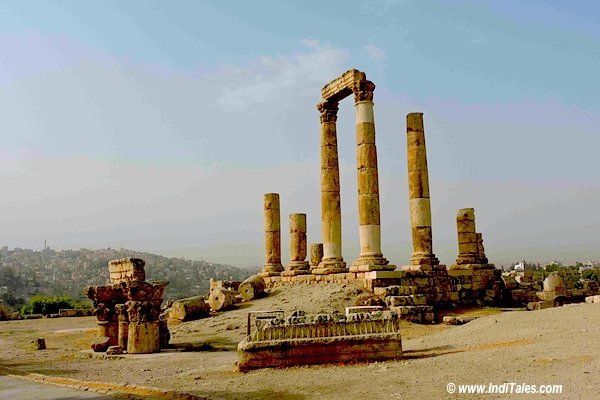
The Temple of Hercules is the most photogenic part of this historic place – tall pillars provide a frame that you can play around with. I would later see more of a Greco-Roman history of Jordan at Jerash.
Early Bronze Age Cave at Amman Citadel

The oldest part of the citadel is a cave that is supposed to be a tomb cave since the 23rd BCE. I was thinking, have I seen anything as old as this, and I could think of only the tree fossils at Ghughua National Park. You stand here in front of this cave that looks like an ordinary cavity on the hill. And wonder about the humans who lived here at times that are humanly incomprehensible now. Step inside a bit and you can almost feel the place though, on the face of it, it still looks like a cavity only.
This rock-cut cave was a community burial place in the Bronze Age. And has been re-used many times for the same purpose in later periods. During the Umayyad period, the stonecutters who were working on building the grand palace used it.
Byzantine Church

The 6th CE church has only a floor plan and some Corinthian pillars left here. It apparently had a mosaic floor according to an inscription, but none of that can be seen here. All you see is a long nave-like structure with a semicircular end. I assume this may have been an important structure of its time.
Umayyad Palace
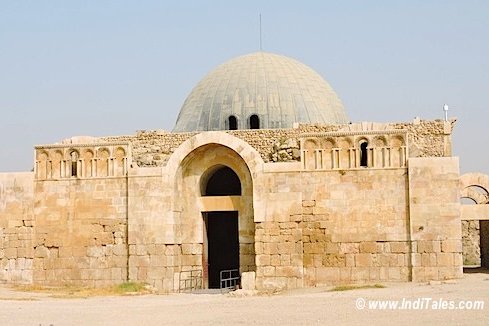
Al-Qasr was a palace built during the early Islamic period i.e. late 7th to early 8th CE. This was probably built upon an existing Greek palace. But what remains today was probably the waiting area for the guests of the palace. It has a massive arched gateway with an interesting wooden ceiling covering the inside part of the dome. This is still in the process of restoration. Located next to it is a Hamman or a Bath that has a series of cold, warm, and hot chambers.
Jordan Archeological Museum, Amman Citadel

This museum within the walls of this historic place was set up in 1951 to showcase the antiquities found here. It is a small museum but its richness lies in some of the oldest known sculpted statues known to mankind. The museum houses antique items like pottery pieces, stone tools, and other things used by men in the good old days. This museum used to have the famous Dead Sea Scrolls that were found near the Dead Sea and have been dated back to 400-300 BCE.
Ain Ghazal Statues

The biggest attraction for me here was the Ain Ghazal statues with their shapely carved eyes that make you feel as if would start talking any minute. Ain Ghazal statues date back to 6000-8000 BCE and have been found at an old settlement near current-day Amman. These are the oldest known statues of any human civilization. Other Noteworthy pieces at Jordan Archeological Museum include various faces carved in stone & stone inscriptions. Most stone figurines here belong to Roman and Hellenistic times. There are animals like lions carved in stone and there are floral patterns.

Terracotta Figurines
I also spotted a lot of terracotta figurines that resemble the mother goddess figures from the Indus Valley Civilization. There was a particular figure depicted as a pregnant lady sitting on a chair and this reminded me of the fertility cult that dominated our ancient civilizations. The patterns on the clay pottery pieces were also very similar and you wonder how did communication happen between these distant lands in those days. Did these artifacts travel from one land to another? How did these patterns have a universal appeal? Some of these clay figurines were found in the Jordan River – could they have been a part of a ritual ceremony? Could they have flown there, or flown here as part of some ancient river network?
There was a skeleton of a child that almost looks like a piece from a hospital table as if it has been kept there for studying human anatomy. Can our bones live for eternity given the right atmospheric conditions?
Water Management
For any settlement, water is the first need. But the hill on which the citadel is located has no source of natural water except the scanty rainwater. Systems were built to store every drop of rainwater in a way that water was available throughout the year. Some of these underground water cisterns can be seen as soon as you enter the citadel. Visually they hardly attract a visitor’s eye. But the moment you put on an engineer’s hat, you can see the brilliance of the system that could make a waterless hill habitable.
Birka – Giant open cistern

There is a giant open cistern with a diameter of 17.5 meters called ‘Birka’ that was meant for water storage. Water from all roofs was diverted to this cistern. What I found interesting in this cistern was the waterproofing done on the walls of the well that ensured no wastage of water to leakage. Although I wondered if it used to be covered to manage the evaporation of water. This large cistern reminded me of Sahastralinga Talav in Patan which is an even bigger reservoir for water management at Patan in India.
The presence of a lime kiln in the citadel points to the days when it would have become a bit industrial.
A cemetery here is the latest part of this citadel. It has graves from the 20th CE and the conservation team decided not to fiddle with them and let them be there.
Vantage Point of Amman Citadel

It is the vantage point from where you can have the bird’s eye view of the monotone city of Amman in pale pink color as if it’s rising from the sand beneath it. The Roman theater in the downtown city can be seen from here. And the city seems to be surrounding this theater. The current palace of the King is on the other side of the city, which is believed to be not so prosperous area. We were told the king lives on that side to show solidarity with the common people.
A visit to this historical place is a must when you are in Jordan, it is like paying a visit to the history of Jordan in a nutshell.
Recommend you to read the following tourist attractions of Jordan on my Travel Blog.
Visit Jordan – My First Impressions
Top 15 Jordan Souvenirs to Pick
Hejaz Railways – Heritage Rail of Jordan


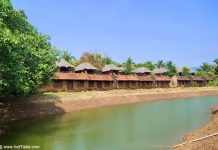

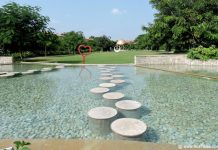



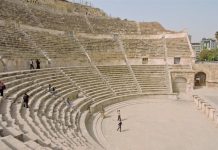





Great post
Wow! The hand of Hercules is HUGE!!! Lovely post….
Thanks Ami.Yep, compared to a real hand, it is huge
It’s amazing! Thank you for some ideas, because I want to go there next year! 🙂
Happy that the story helped you with your planned travels…stay connected.
Thanks for sharing this post:) Written Well!
Good post. Had been to Amman. Some more interesting spots are like ‘Wadi Rum’ (Nothing to do with Old Monk Rum 😉 ) where one can go camping. Overall, the country seemed reasonably clean (Coming from India, that is the first thing I could see), people friendly and a beautiful climate.
Thanks Rajan. I did visit Wadi Rum and the rest of tourist circuit in Jordan. Do read the other post in the series that include my favorite Jerash, my first impressions of the country and the best souvenirs to pick in Jordan.